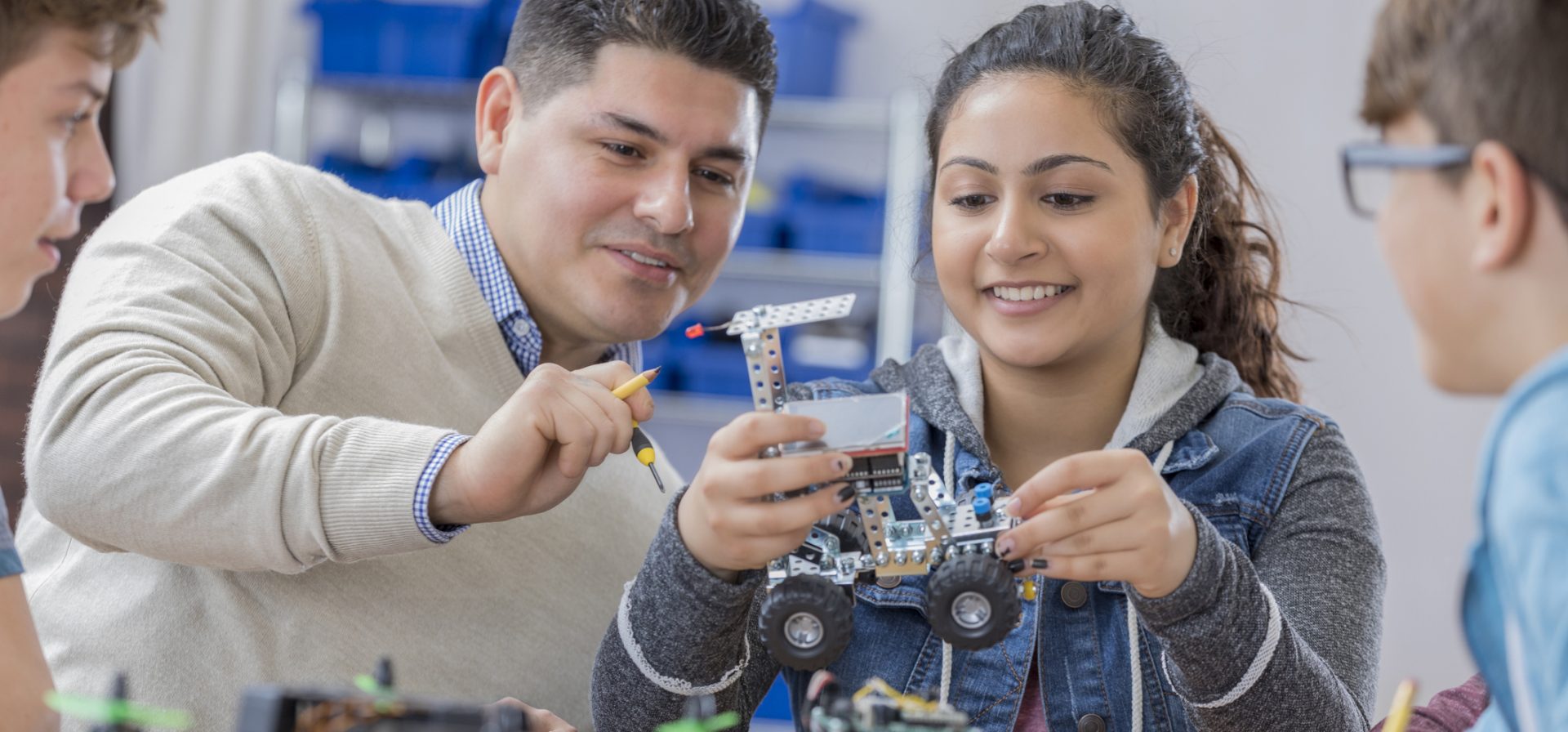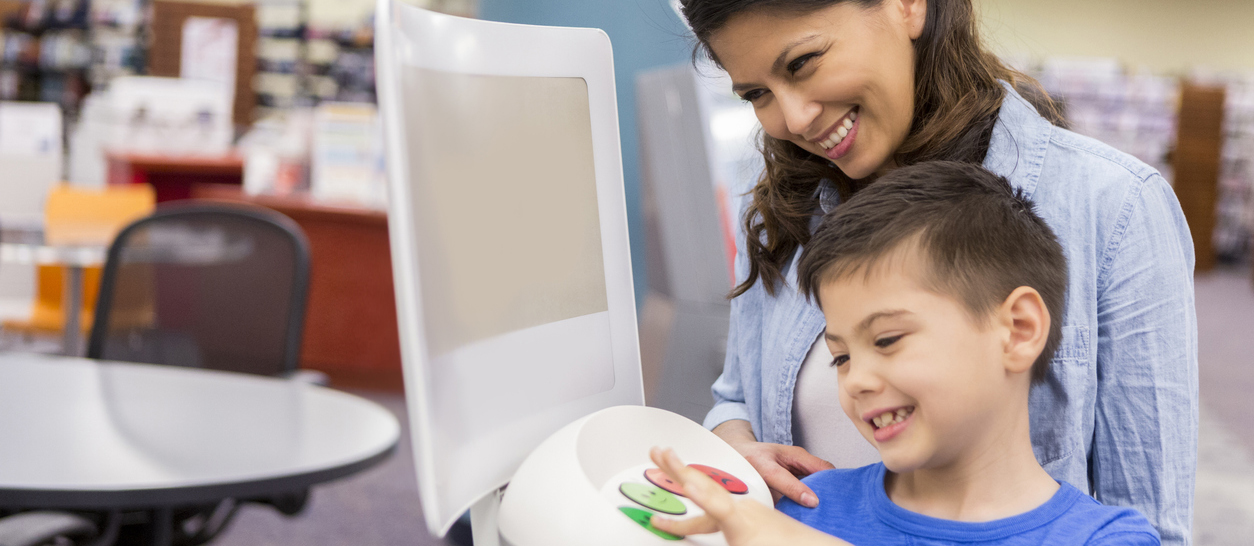In This Issue
- Message from the Executive Director
- Governor’s Guidance for School Reopening
- 2020-21 California State Budget and its Impact on K-12 and Higher Education
- California Department of Education (CDE) Issues Guidebook for Reopening of Public Schools
- California STEM Network Hosts First Webinar in Series
- State Board of Education
- Study finds 11 million Children at Risk of Losing Access to Environmental and Outdoor Science Education
- California State PTA Launches Statewide Campaign Engaging Families Around Next Generation Science Standards
- #CASTEAM20 Back-To-School Pre-Conference on August 4
Message from the Executive Director
As we struggle with a devastating second wave of the coronavirus pandemic and the prospect of schools reopening in the fall with distance learning only, there are warning signs that the hard-fought gains made to expand access to rigorous STEM instruction are at risk of rapid erosion. In her Cal Matters guest commentary, our colleague Teresa Barnett of Community Resources for Science said it well, “in many communities, when the school doors closed, science teaching and learning came to a stop.” That may sound like hyperbole, but the reality is that the abrupt shutdown of schools stretched our teachers and educational leaders to the brink. Far too many kids did not have access to reliable internet service or the devices to connect to that service. And pivoting to an online model of instruction resulted in a narrowing of the curriculum. As districts proceed now with the development of their re-opening plans, it is incumbent upon us to work collaboratively and in partnership with our schools to ensure the progress made in STEM education is not lost and that this crisis does not define the education of our children for years to come. Let us do all we can to meet this moment and support both the immediate demands of teaching and learning in a world with COVID-19. But, we must also keep the long view in mind and not let up on our push to ensure all kids have access to high quality STEM instruction. Again, Teresa said it best, “the good news is that teachers and school districts do not have to do it alone. California has an abundance of science centers, environmental education programs, university researchers, and science and engineering sector employers who will continue to be strong partners in the march toward equity in access to the learning experiences that create pathways into impactful STEM jobs that drive our state’s economy.”
Governor’s Guidance for School Reopening
On Friday afternoon, Governor Newsom announced new statewide requirements that public and private schools in counties that are on the state’s COVID-19 monitoring list shall be closed to in-person instruction. A map of county status can be found here.
Schools in these counties must provide distance learning only when beginning the school year and cannot open for in-person instruction until they have been off the monitoring list for 14 consecutive days. More detail about the new reopening requirements can be found here.
For local education agencies (LEAs) in counties not on the state’s watch list, they retain discretion to begin the school year in accordance with the instructional models laid out in the education budget trailer bill, SB 98 (in-person, distance learning, or hybrid).
The California Department of Public Health (DPH) has also issued new industry guidance which outlines updated recommendations and requirements for masks, physical distancing, testing, and contract tracing.
The Administration’s guidance for school reopening considers the same criteria used by DPH in determining county closure. While recommending a school consult with its public health official first, the new guidance creates a tiered structure for when a classroom, school or district should shut down in-person instruction in the event a student or staff person tests positive for COVID-19. In what will likely be a controversial element, the updated guidance does not require a six-foot distancing requirement. Instead, the new guidance refers to “maximum distance, as practicable.”
When schools are providing in-person instruction, the Administration is mandating all staff and students in grades 3-12 wear masks; masks are strongly encouraged for students in grades K-2. Students in grades 3-12 who refuse to wear a mask may be referred to distance learning-only instruction. Prior to last Friday, there was no authority for schools to mandate masks for students. This new guidance will allow local policies to do so. According to the Administration, California is the first state to allow for this mandate.
2020-21 California State Budget and its Impact on K-12 and Higher Education
While the media coverage has framed the recently adopted 2020-21 California state budget as generally positive for schools and colleges, a significant funding threat is on the horizon. First the good news. The budget will make no cuts to the Local Control Funding Formula; and categorical programs – including after school programs, adult education and career technical programs – all avoided the funding reductions proposed by the Governor in May and will be funded at their 2019-20 levels. That said, policymakers reduced the Proposition 98 (K-12 and community colleges) funding guarantee by $10.6 billion from the 2019-20 Budget Act level. In order to fund K-12 at the reduced Proposition 98 level without making programmatic cuts, the budget will defer a total of $11 billion – meaning $11 billion of Proposition 98 funding from the 2021-22 school year will be used to support schools in the 2020-21 school year. As a mitigating factor, $5.7 billion of those deferrals will be rescinded if California receives an additional $14 billion from the federal stimulus package; if the state receives some amount less than $14 billion, then the reduction to the deferrals will be pro-rated. While avoiding cuts in the near term is preferable, we are deeply concerned about the short term and potential long-term implications of the significant reduction in the Proposition 98 guarantee and deferrals on schools and community colleges.
While the budget also avoids the most draconian cuts for postsecondary education, California’s colleges and universities are not out of the woods. Without additional anticipated federal funding, budget cuts will devastate colleges – limiting access, affordability, quality, and completion – and exacerbate equity gaps by both race and income. A detailed analysis of the impact of the budget on K-12 and higher education can be found here.
California Department of Education (CDE) Issues Guidebook for Reopening of Public Schools
In late June, CDE released a document that provides comprehensive guidance regarding the reopening of schools as the coronavirus continues to disrupt daily life across our state. The document is 62 pages long, defying easy summary here. But it is comprehensive, and includes guidance related to:
- Health and Safety when physically reopening school sites, including a 10-point priority checklist related to local conditions, hygiene, distancing, protective equipment, how to deal with positive cases, cleaning, and critical student and employee issues.
- Instructional Programs, including distance/blended/staggered-schedule models; instructional planning; collaboration; data management; and an online resource of instructional materials. This section further addresses social-emotional learning (SEL), which requires particular attention in the face of distancing and other strictures that can undermine schools’ efforts to promote it. The guidance provides critical questions for local educators to consider to support students, families, and staff in understanding COVID-19-driven requirements and integrating SEL practices. This section also provides attention to ensuring that local planning and practices meet the needs of Special Education and English Learner students; and considers how to foster success in several discrete instructional programs.
- Professional Relationships and Learning, as well as Continuity of Relationships and Learning Plans. The guidance contains links to an array of resources to support staff in such areas as gaining understanding, skills, and training related to distance learning, online professional development, and providing leadership from afar; while also addressing means of fostering professional learning communities. It also offers direction about keeping educators, staff, students and communities connected and collaborating, while ensuring sufficient feedback loops to keep teams on track for success.
- Maintaining the Mental Health & Well-Being of All, through an array of universal and targeted/local plans related to staff wellness, community engagement, classroom strategies, and targeted interventions.
- Myriad, diverse issues, such as Communications planning; Community Engagement; Early Care and Education; and School Services, such as transportation and student meals.
The CDE document seeks to be a truly comprehensive tool for educators, families, and communities, by presenting advice, critical questions that should be addressed in planning, checklists, and links to a wide range of resources.
California STEM Network Hosts First Webinar in Series
On July 15, we hosted the first webinar in a series we will be presenting this year. The program, Building Agile Systems to Scale TK-12 STEAM Efforts, told the story about the San Diego Unified School District’s Elementary STEAM Pilot Program. This program, which is now in 48 (almost half) of the district’s elementary schools, has made a significant impact on teaching and learning. Our presenters, Cheryl Hibbeln and Michael Goodbody, shared with us how partnerships and relationships built during the program’s development have proved to be critical to help the district navigate the unique challenges posed by the shelter-in-place orders. We learned how teachers and students who are participating in the program were better prepared to make the shift to distance learning, how they transitioned student presentations and group collaboration, assessing student learning, professional learning, and collaborative brainstorming to a distance learning environment. We also learned about the curriculum that has been developed to support the integration of STEAM into the school day. An archive of the webinar is available here.
Save the date for September 9 when we will host our next webinar, which will feature Susie Grimm and Frances Zazueta from PBS SoCal. Their presentation will focus on STEM Family and Educator engagement for supporting kids from birth to age eight and bilingual STEM resources.
The California State Board of Education welcomed three new members at their July 8 – 9 meeting and said farewell to their student member, Brenna Pangelinan. The three new members are Cynthia Glover Woods, Chief Academic Officer, Riverside County Office of Education, James McQuillen, Education Director, Yoruk Tribe, and Haydee Rodriguez, High School Teacher, Central Union High School. More information about the new board members is available in the Governor’s press release.
The Board received an update from CDE staff and representatives from WestEd and Educational Testing Services (ETS) on the progress made to explore the development of a residual gain (RG) growth model. The presentation included a description of the Estimated Best Linear Predictor (EBLP), pronounced E-blip, a mechanism for adjusting the RG model in order to improve year-to-year stability of measures for smaller school and student group performance. The timeline shared during the presentation calls for a presentation on the EBLP methodology to the California Practitioners Advisory Group in August, a sharing of preliminary results with the State Board in September, and action by the State Board in November. If approved by the Board in November, it is anticipated there will be a public release of the data in December. Given the lack of testing in 2019-20, the data shared will be from previous administrations of the Smarter Balanced assessments in language arts and math.
SB 98, the 2020-21 budget education trailer bill, established a requirement for school districts to develop and approve a Learning Continuity and Attendance plan and suspended the requirement to produce a Local Control and Accountability Plan (LCAP) or LCAP annual update. The template for the Learning Continuity and Attendance plan template will be developed by the State Superintendent of Public Instruction in consultation with the State Board. As such, there was no formal action to be taken by the State Board on the Learning Continuity Plan template. Children Now, along with other stakeholders, took the opportunity to advocate to the Board that they consult with Tony Thurmond to include a requirement for districts to define what their minimum daily live interaction expectations will be during distance learning. SB 98 did not establish a minimum amount of time; however, it does require distance learning to include daily live instruction. The Department released the draft template for public review on July 13. The final plan template is expected to be released on August 1 as required by SB 98.
Other actions taken by the State Board in July included the approval of the 2020 Arts Education Framework, the 2020 World Languages Framework, and the 2019–20 School Accountability Report Card Template.
Study finds 11 million Children at Risk of Losing Access to Environmental and Outdoor Science Education
On June 10, the Lawrence Hall of Science at UC Berkeley issued a policy brief, A Field At Risk: The Impact of COVID-19 on Environmental and Outdoor Science Education, which concluded that the coronavirus pandemic could slash environmental and outdoor science education programs in half nationwide. An alarming 63 percent of organizations that provide outdoor environmental and science education to K-12 students are uncertain about their ability to ever reopen their doors. By the end of May, the study’s authors estimated some 4 million students had missed the opportunity to engage in these programs. This number could rise to 11 million by December 2020 if these organizations are unable to reopen. The impact in California is even higher than nationally.
This loss will be felt disproportionately by historically marginalized groups, particularly students of color and students from low-income families, that are most likely to lose environmental education within their local school districts. It’s estimated that by Dec. 31, 2020:
- Some 11 million kids who would have been served by 1,000 organizations will have missed environmental and outdoor science learning opportunities. About 60 percent of them are from communities of color or low-income communities.
- The 1,000 organizations surveyed will have lost about $600 million in revenue.
- About 30,000 employees will have been laid off or furloughed from these organizations.
- It is highly likely that 37 percent of these organizations in California and 30 percent nationally will not reopen.
- Over one-third of the outdoor education field – and up to 65 percent – will likely have disappeared, eroding a key component of the nation’s education infrastructure.
The authors of the policy brief suggest ways to mitigate the potential losses through funding priorities and intentional coordination of efforts with local and state education agencies. The ideas include redeploying outdoor educators to work in K-12 school settings to increase the capacity of the schools to educate students, while following social distancing guidelines. Such partnership arrangements could expand the space limits of schools and help them achieve learning goals, while allowing parents to return to work and providing educational, health and social benefits to students.
California State PTA Launches Statewide Campaign Engaging Families Around Next Generation Science Standards
As one of our key statewide partners, we are pleased to share that the California State PTA has launched its “Discover Together” campaign, which is a statewide initiative that encourages families to find opportunities for science exploration during the everyday activities of life. As science standards have changed, so has the way kids interact and experience it. And with all the limitations imposed as a result of COVID-19, it turns out science activities are an engaging and enriching activity any family can do. The California State PTA has also developed a resource library, which is linked to our web site, to help families and educators identify great information that connects science education with everyday life. You can learn more about #DiscoverTogether by visiting the campaign website at http://capta.org/discover-together. There, users will find additional information on Next Generation Science Standards, a resource library for families and educators, and other materials that will help support science discovery and learning for all of California’s children.
#CASTEAM20 Back-To-School Pre-Conference on August 4
The Californians Dedicated To Education (CDE) Foundation is hosting a California STEAM Symposium Back-To-School Pre-Conference focused on Building Community with STEAM scheduled for August 4, 2020. Registration for the ½ day event is included with a completed registration for the California STEAM Symposium. The pre-conference program will include planning for students’ back-to-school learning, no matter the model: distance learning, in-person, or a hybrid; ideas for building relationships with students in a socially-distanced world; hands-on activities to use in your learning environment; inspiring keynote speakers; and a variety of peer-led, interactive breakout sessions highlighting in-person and distance-learning activities. Visit www.steamcalifornia.org for more information and registration.



